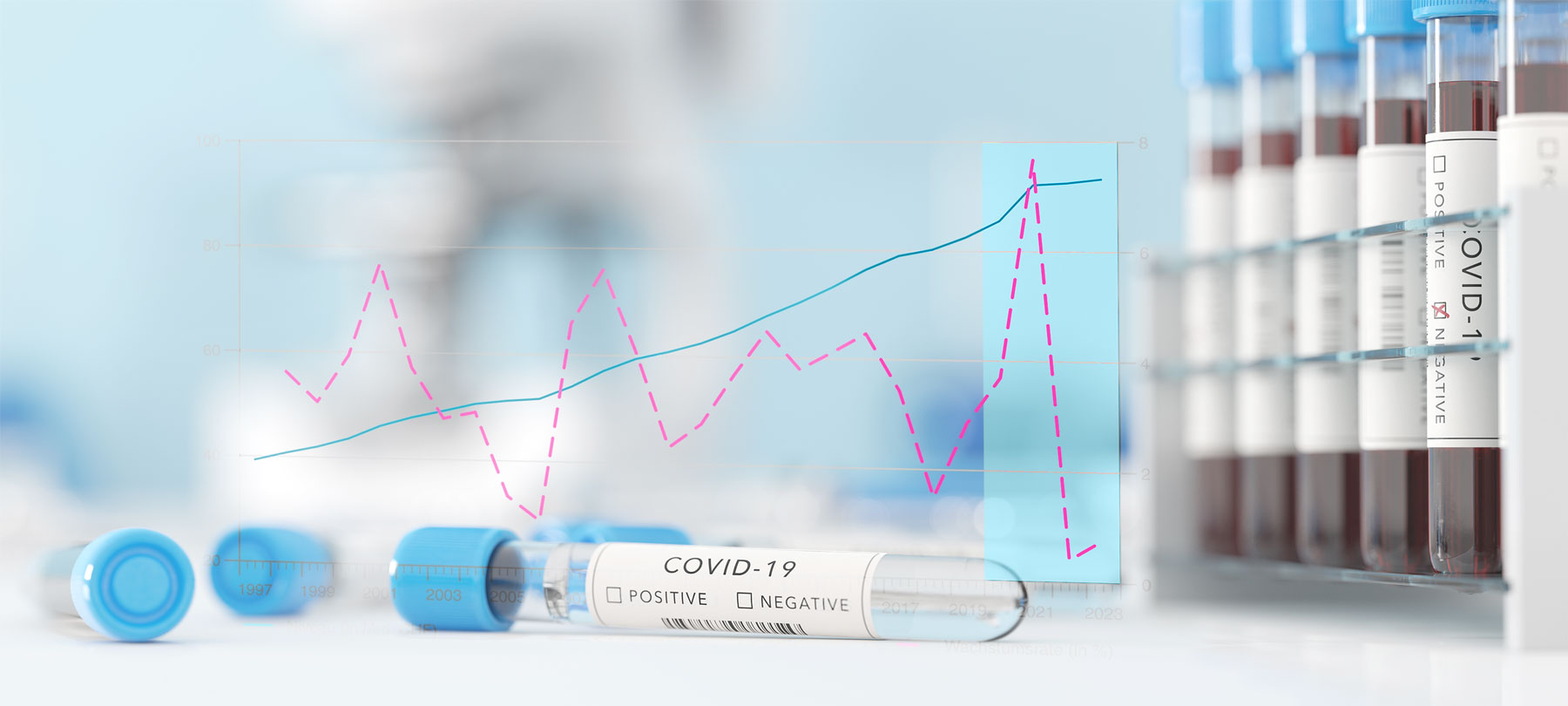KOF Healthcare Expenditure Forecast: pandemic causing sharp increase in spending this year
Healthcare expenditure will increase by 7.3 per cent this year owing to the pandemic. The growth rate will then fall significantly to 1.3 per cent in 2022 and 1.2 per cent in 2023. These are the key findings of the KOF Healthcare Expenditure Forecast, which was prepared with the help of a research contribution from comparis.ch.

KOF is forecasting an increase of 7.3 per cent in nominal healthcare expenditure for the current year, which is mainly caused by the fight against the COVID-19 pandemic. According to KOF’s forecast, growth rates will subsequently fall back to 1.3 per cent in 2022 and 1.2 per cent in 2023. Healthcare expenditure grew by 2.9 per cent in 2020, according to KOF’s calculations. However, the trajectory over the forecast-ing period will be not insignificantly determined by the past and expected evolution of the COVID-19 pan-demic. The average annual increase over the entire forecasting period (2020 to 2023) is 3.2 per cent, following 3.0 per cent over the 2010s and 4.0 per cent over the years 2000 to 2009.
Healthcare expenditure rising in absolute terms and relative to GDP
The ratio of healthcare expenditure to gross domestic product (GDP) is expected to rise again this year from 12.0 per cent to 12.3 per cent and then to fall back slightly in 2022 (12.0 per cent) and 2023 (11.8 per cent). Here, too, the evolution of the forecasting period is partly being determined by the pandemic. Over the entire forecasting period (2020 to 2023) the ratio of healthcare expenditure to GDP averages 12.0 per cent, following 10.8 per cent over the 2010s and 9.7 per cent over the years 2000 to 2009. During the forecasting period, KOF expects to see healthcare expenditure of CHF 84.8 billion in 2020, CHF 91 billion in 2021, CHF 92.3 billion in 2022 and CHF 93.4 billion in 2023, as shown in the table below.
COVID-19 tests causing higher government and household spending
Analysis of the financing of healthcare expenditure shows that the COVID-19 pandemic in 2020 and, especially, 2021 caused the government to make historically very high contributions to growth. This can be attributed to the Federal Council’s swift decision to bear the cost of a large proportion of diagnostic COVID-19 tests and the supply of vaccines to the population. This trend will be reversed in 2022 and 2023 provided, of course, that the pandemic does not require the government to make an even greater financial commitment in the healthcare sector.
The second striking feature is the strong contribution to growth made by households’ self-financed healthcare expenditure in 2021. The cost of COVID-19 tests, which is not borne by the federal govern-ment, is likely to be largely responsible for this. Self-payments will increase significantly this year owing to the new testing regime in place since autumn 2021. Over the coming years, however, the privately paid cost of tests should decline again – assuming, at least, that the pandemic does not bring any further un-pleasant surprises.

About the study
The forecast compiled by KOF Swiss Economic Institute at ETH Zurich on the levels of Swiss healthcare expenditure over time is published annually and supported by a research contribution from the internet comparison service external page comparis.ch.
Downloads
You can find the detailed study (in German) Download here (PDF, 1.3 MB).
Download Here (PDF, 88 KB) you can find the press release as PDF.
Contact
Dep. Management,Technolog.u.Ökon.
Weinbergstr. 56/58
8092
Zürich
Switzerland